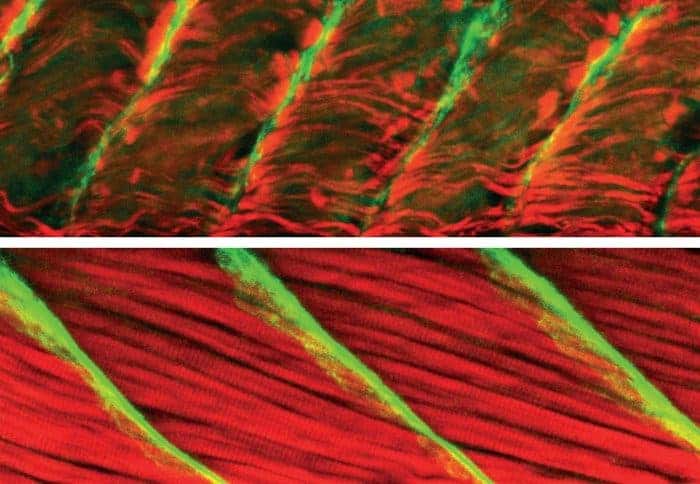Scientists from the University of Ferrara, Italy collaborating with the Beijing Genomics Institute have isolated a gene that, when mutated, causes muscle tissue to become significantly weakened and damaged. Their findings, published in The Journal of Clinical Investigation, show how the gene, dubbed Popeye domain containing-1, has a role in ‘gluing’ muscles cells together.

healthy gene (below).
Image via imperial
The two institutions pooled their efforts to study the genetic heritage of an Italian family who all suffer from muscular dystrophy. This progressive condition damages and weakens skeletal muscle tissue more and more with age, making movement and coordination near impossible for patients. The family is also plagued by a condition known as cardiac arrhythmia, that manifests as irregular and abnormal heart beat patters.
The Popeye group of genes were first identified 15 years ago by scientists from the Imperial College of London. Investigating on Zebrafish muscle tissue, they found that mutations of the gene affected both heart and skeletal muscle function — the gene regulates the production of a protein crucial in making muscle cells adhere to each other, allowing better performance by keeping them glued together and supporting each other.
Writing in the paper, Professor Thomas Brand said:
“This is the first example that this specific gene can cause both heart and muscle disease.”
The above image from the study shows the muscles in the tail of a Zebrafish with a mutated version of the gene, leading to damage in the tissue. The image below it shows a Zebrafish tail with a normal copy of the gene.
Although scientists have long known that muscular dystrophy is linked to heart conditions, they are still trying to find the genes that cause both conditions.
“From here we need to find out whether this gene causes the disorders in just this family, or whether it has wider implications for other patients,” explained Professor Thomas Brand, senior study author, from the National Heart and Lung Institute at Imperial.
Was this helpful?



